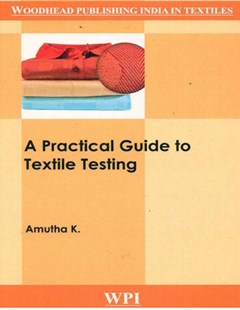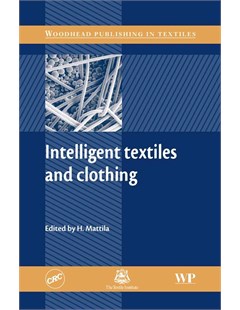A practical guide to textile testing
A Practical Guide to Textile Testing discusses the physical and chemical test procedures used in the testing of textiles at different stages, namely, fibre, yarn, fabric and garment.
2016
A Practical Guide to Textile Testing discusses the physical and chemical test procedures used in the testing of textiles at different stages, namely, fibre, yarn, fabric and garment. It serves as a guide for young learners within the textile industry. In addition to the testing procedures, information related to textile testing is included for better understanding.
This book serves as a practical guide for use in textile testing laboratories and also provides information regarding laboratory accreditation and the international standard ISO/IEC 17025.
Testing needs to be carried out in a well-organized manner since test results are used for evaluating product or fabric quality. Hence, given the importance of testing, various testing methods and procedures are standardized by organizations such as ISO, AATCC, ASTM, BSI, DIN, ANSI, and so on. The testing standards set by these institutions are unique and developed after careful research. It is crucial to understand the importance and necessity of textile testing. It is necessary that aspiring professionals and readers of this book understand the implications of terminologies such as calibration, reliability, repeatability and traceability, as they represent key criteria, parameters, and deliverables expected to be achieved via testing.
The aim of this book is to give specific information about the various procedures involved in textile testing in order for learners to gain knowledge about practical approaches utilized in textile testing. The standard atmosphere for testing, influence of moisture on properties of textiles, sampling methods’ importance as well as conditioning of sample before testing, testing procedures and, finally, the evaluation of results are explained.
This book is divided into six parts: First, introduction to textile testing with the sources of testing standards, sampling for testing, moisture and its relation with textiles; second, fibre testing; third, yarn testing; fourth, fabric testing; fifth, testing for export market; and sixth, accreditation of textile testing laboratory. Each chapter is self-explanatory, and on the whole, the book is a complete guide to textile testing.
Amutha, K.. A practical guide to textile testing, WPI, 2016
Công nghệ may & Thiết kế thời trang
 |  |  |
| A practical guide to textile testing | Fashion Trends: Analysis and Forecasting | Intelligent textiles and clothing |
Thứ Năm, 13:04 06/05/2021
Copyright © 2018 Hanoi University of Industry.